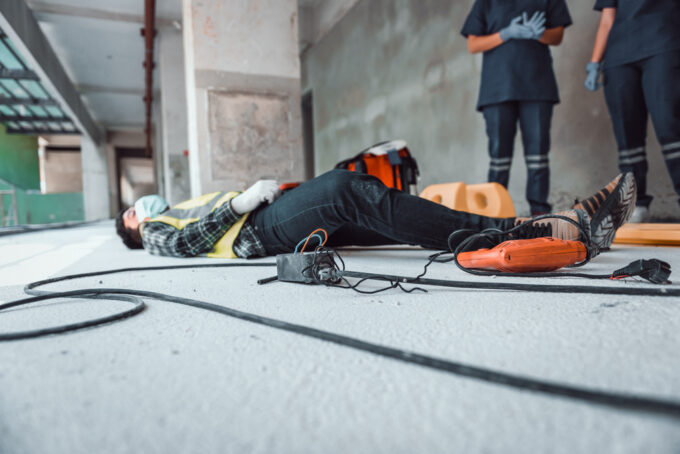What to do in case of an electrical accident?
According to the Swiss Federal Inspectorate for Heavy Current Installations (ESTI), 60 to 70 percent of electrical accidents still occur in private households. However, the first priority for first responders in the event of an electrical accident is their own safety. Here's what you should keep in mind when providing first aid in the event of an electrical accident.

The extent of electrical accidents is often underestimated. In addition to the duration of exposure, energy strength and the current flow through the body, the type of current (direct current, alternating current) also plays a decisive role and must be taken into account when first responders treat the affected person. With alternating current, the charge carriers periodically change the direction of flow.
Statistically, however, affected persons suffer more from cardiac arrhythmias if they have been in contact with alternating current.
However, the first priority for first responders in the event of an electrical accident is their own safety. An injured first aider is a poor first aider. First aid should not be administered until the power supply has been safely interrupted. Any accident involving electricity should also be medically assessed.
Invisible consequential hazards
Insidiously, however, the damage caused by electricity is often not immediately noticeable. This can shift the electrolyte balance and lead to dangerous heart rhythm disturbances in the long term. It is therefore imperative that any person who has suffered a heart attack go to hospital or see a family doctor, even if they appear to be fine. In case of palpitations, shortness of breath or a cramping sensation, the emergency medical services should be notified immediately.
A good guide in case of an emergency is the Suva leaflet "Caution Electric Shock". It also summarizes the most important rules to follow in the event of an electrical accident:
- Observe self-protection. The victim may be under power.
- For low voltage (whichever is faster and safer): Remove victim from circuit with non-conductive object (e.g., broom handle, wooden slat) and remove from danger area or interrupt flow of current (unplug, remove fuse).
- In case of high voltage: Keep your distance, call emergency services. Any approach is life-threatening until the current is cut off!
- In case of unconsciousness, dizziness, chest pain or rapid heartbeat: Call emergency medical services.
- Check breathing and heartbeat. In case of cardiac or respiratory arrest, apply artificial respiration and chest compressions immediately and until the arrival of the rescue service.
- In the absence of the above symptoms: Cool any burns and go to hospital.
- In case of secondary injuries (e.g. fractures, bruises): Take immediate measures and consult a doctor.









